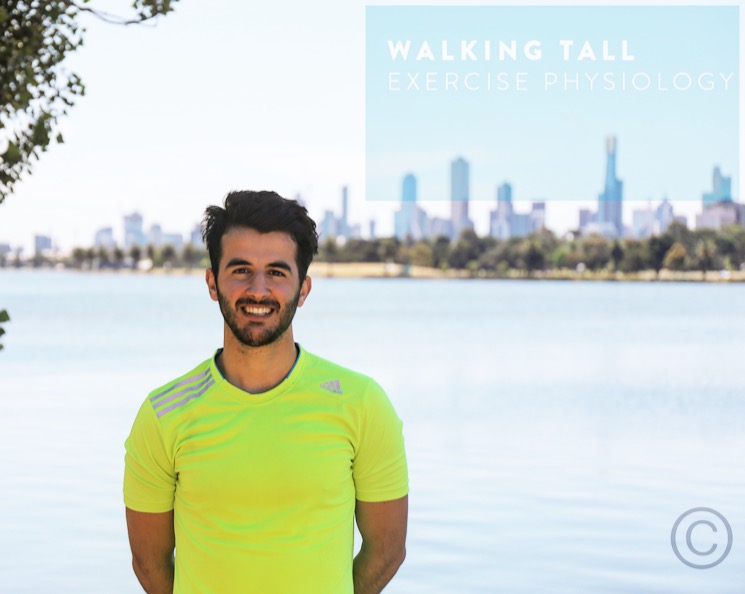It is that time of the year where the 2015/16 football season comes to an end and we are given approximately 8-12 weeks off until that yearly cycle returns and we head full steam into pre-season again. This article is designed to provide you with some key tips you should apply to your off-season programing to best prepare you for the 2017 season, ensuring you remain injury free, with a strong physiological strength/fitness base to prepare you for 8-12 weeks of pre-season before round 1 arrives.
***
From a practitioner’s point of view, allowing a few weeks rest (no more than 2-3 weeks) following the season’s end is an understandable and acceptable decision, as it allows your body to reset (in terms of tightness, stiffness, injury recovery, and any niggles you have played through) giving your body the necessary break before you start re-conditioning yourself again.
Following a long season of approximately 22-40 weeks (Depending on what level you compete in throughout Victoria) our body has become accustomed to the aerobic/anaerobic demands of long training sessions and games, which takes its toll on the bodies structures, in particularly muscle strength (we lean out in terms of muscle mass/bulk), optimal muscle resting lengths (tightness in muscles and ligaments), and laxity of our tendons and ligaments (which have been under strain trying to keep up with the load of training/game demands).
But where do you start? I’ve broken your off season program into three blocks of four weeks:
- Block 1- Hypertrophy (muscle building)/strength and flexibility
When heading back into the gym, it’s important not go too hard too early – come to terms with the fact that you are training in preparation for pre-season, not a bodybuilding competition (no need for super heavy weights, repetition maxs or PBs). In this 4 week block, we are aiming to build muscle in a symmetrical manner (we don’t want to create imbalances), so for this 4 week block our lower limb/core component should be balanced with machine weights (evenly distributed weight to work both sides of the body evenly) and free weights (introduce stabiliser muscles to load).
Sticking to approximately 8-12 exercises at 3 set x 10-15 repetitions, 2-3 times per week (alternating days), we will promote muscle hypertrophy across our whole body (more specifically lower half) of our Type 2A and 2B muscle fibres (fast twitch fibres), which in simple terminology allows our muscles to grow and strengthen (more abundance of muscles fibres) for our explosive efforts.
Now, in terms of what exercises to do, we are trying to replicate movements we do in soccer, using our joints in a similar manor. Stick to upright squats, calf raises, leg extensions etc. and move throughout a whole range (not half squats, or incline leg press for example) to produce optimal muscle tension across our sarcomeres for maximal benefits.
Progressions of load (intensity, weight, reps) should be no more than 15% by the end of the 4 weeks. Pre-post session should always include 10-15 minutes of stretching/mobility exercises as we need to allow our muscles to return to normal resting lengths to allow us to move throughout normal ranges, as the previous soccer season will have caused our resting muscle length to shorten, causing tightness, stiffness, and posture changes. Don’t let this part of your training be overlooked as it plays a large role in your ability to move, run, kick, pass without restrictions or limitations.
- Block 2 – Strength/endurance and functional training
During this block, we are gradually transitioning from our strength base of lower reps and sets and begin to tweak our program to prepare our muscles to work more aerobically to cope with the workloads pre-season presents us with.
Strength\endurance can be achieved by undertaking around 8-12 exercises, 3-5 sets x 15 -25 repetitions of about 75% 1RM (75% of your max weight you can lift) 2-4 days per week (alternating days). We not only improve our neuro-muscular control and motor patterning as we constantly repeat movements which re-wires our brain, but we are also strengthening our tendons and ligaments to help our joints move optimally as our muscles contract\relax as well as providing stability.
Balance your workout with machine weights and free weights, but also introduce a functional body component such a step-ups/downs, lunges, TRX exercises, single leg exercises etc., where we can promote the use of our whole body to increase the activation of stabilizer/core/deep muscles, so our balance and proprioception begins to improve (e.g. getting bumped during a game and having the ability to remain stable/balanced).
Try tweak the functional exercises to football-related movements such as moving laterally, twisting, hopping, bounding, jumping, for the reason that the more you practice these, the more your brain will embed these movement patterns which will allow you to execute them during your pre-season efficiently and effectively.
- Block 3 – Interval circuit training/base fitness
This block generally brings us into the 4 weeks before pre-season commences where we need to start ramping up our functional capacity and ability to work at higher intensities, with a high emphasis on HIIT, (High intensity interval training) where we become accustomed to exercising at higher intensities with low periods of work/rest, as we need to mimic the work/rest ratio of football, which is generally 3:1.
This doesn’t mean we forget the training concepts in the last 8 weeks, maintaining our weights 1-2 days a week would be ideal to maintain our strength consistency. Interval circuit training is an effective training technique, which can be tailored to suit your goals/sport.
In terms of football specific training, try stick to our work rest ratio (e.g. 3 minutes work/1 minute rest, or 90 seconds work/30 seconds rest – this can be altered according to your current fitness/ability – accumulating to anywhere between 20-60 minutes/circuit, 1-3 times/week).
By consistently raising/lowering our heart rate, our cardiovascular fitness begins to increase and we begin to transition into our pre-pre-season conditioning where aerobic fitness comes into play. Our body responds best to new stimuli, so changing your circuit up will produce the best outcomes, and it will allow our body to cope to high workloads during pre-season.
A running component is also important in this phase, and although pre-season can often be a lengthy period of anywhere between 8-12 weeks in Australia, an aerobic base of fitness needs to be reached before we start pre-season so we don’t break down when put through the paces in the few weeks of pre-season when risk of injury is high. Build up jogging 2-3 times per week 15 minutes at a time, building up to 30-45 minutes at 60-80%VO2 max, a good indicator of your fitness is running in and about 4 minutes per kilometre before pre-season starts.
Summing up
I am well aware these tips/training guidelines will not fit everyone’s lifestyle/commitment, as we all know anything below the A-League is a semi-professional environment which most certainly entails a full-time commitment to long hours of work, university, families, children etc., so often enough following the above guidelines may be impossible.
Even completing 1/2 or 1/3 of the above guidelines will place you on a path where you will have a reduced risk of injury/breakdown during the season and in-season, and allow a good foundation of conditioning for you to commence a pre-season in a better state than you have been previously.
Some players are committed to putting in the hard yards, some are playing for fun, a shot at a full-time gig, others for health/fitness, extra cash, enjoyment, but regardless of the end goal, you need to be playing and training week in week out, so don’t let yourself down by doing the minimum. A well-oiled football body will empower you to be healthier, happier, not injured, at lower risk of illness, having time off work due to injury, or spending money on medical expenses/surgery.
WALKING TALL are exercise physiologists with over 20 years of football experience therefore can provide you with a tailored off-season program, 1on1 sessions, that will be monitored and progressed according to your skill level/fitness, age, competition, goals.
To discuss or enquire about getting you or your sporting club involved in with Walking Tall’s pre-season programs please contact us on evan@walkingtall.com or 0423923585 or click here for the Walking Tall Facebook page.

